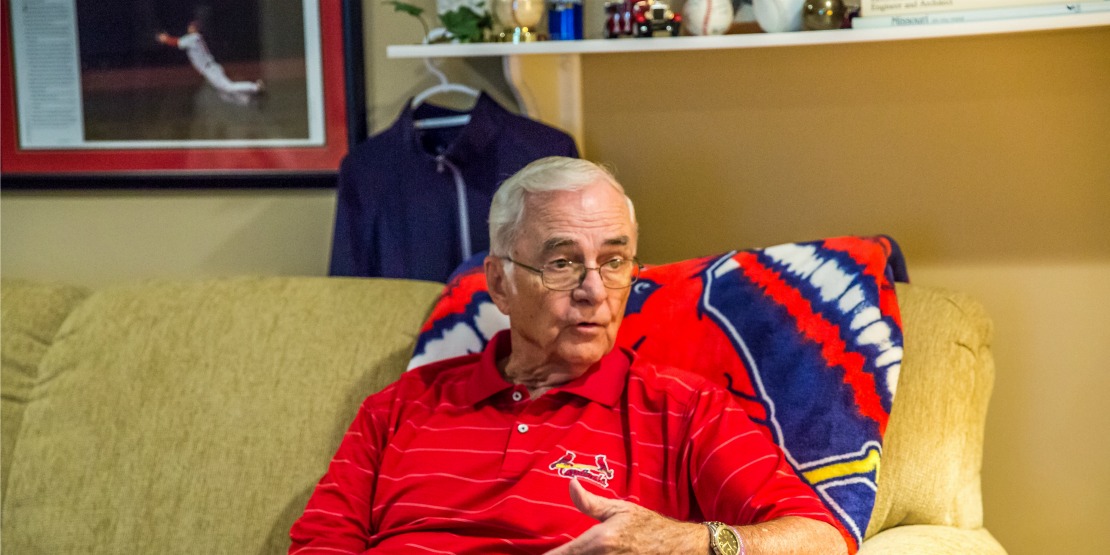As millions of baseball fans tune in to catch the upcoming Major League Baseball All-Star game, Charlie James will probably join them. But unlike the vast majority of fans across the country watching the best of this era’s players square off in the Midsummer Classic, the current member of the William Woods University Board of Trustees will have a unique perspective about baseball legends.
That’s because once upon a time, Charlie James lived the dream that untold numbers of American boys have wished for for generations. Not only did he achieve what a tiny percentage of anyone who ever picks up a bat and glove ever do – make the major leagues – but he got to do so for his beloved hometown team, the St. Louis Cardinals. And even more impressive, he had the opportunity to play alongside and against some of the most legendary names in baseball history.
Still more dazzling, he even excelled against a man considered by many to be the greatest pitcher in baseball history, and also got to play in a World Series.
As the old phrase goes, it’s a wonderful life, right? But ask Charlie about those remarkable memories and experiences from so many years ago, and he humbly smiles and says “It was a nice honor to have a chance to play for my hometown team.”
2018 is the 60th anniversary of two pretty important milestones in Charlie James’ life. In 1958 he married his wife Jo, with whom he raised two children, five grandchildren and three great-grandchildren. It is also the anniversary of the signing of his first professional baseball contract, with the St. Louis Cardinals, beginning an eight-year odyssey that would take him to the very pinnacle of the American pastime.
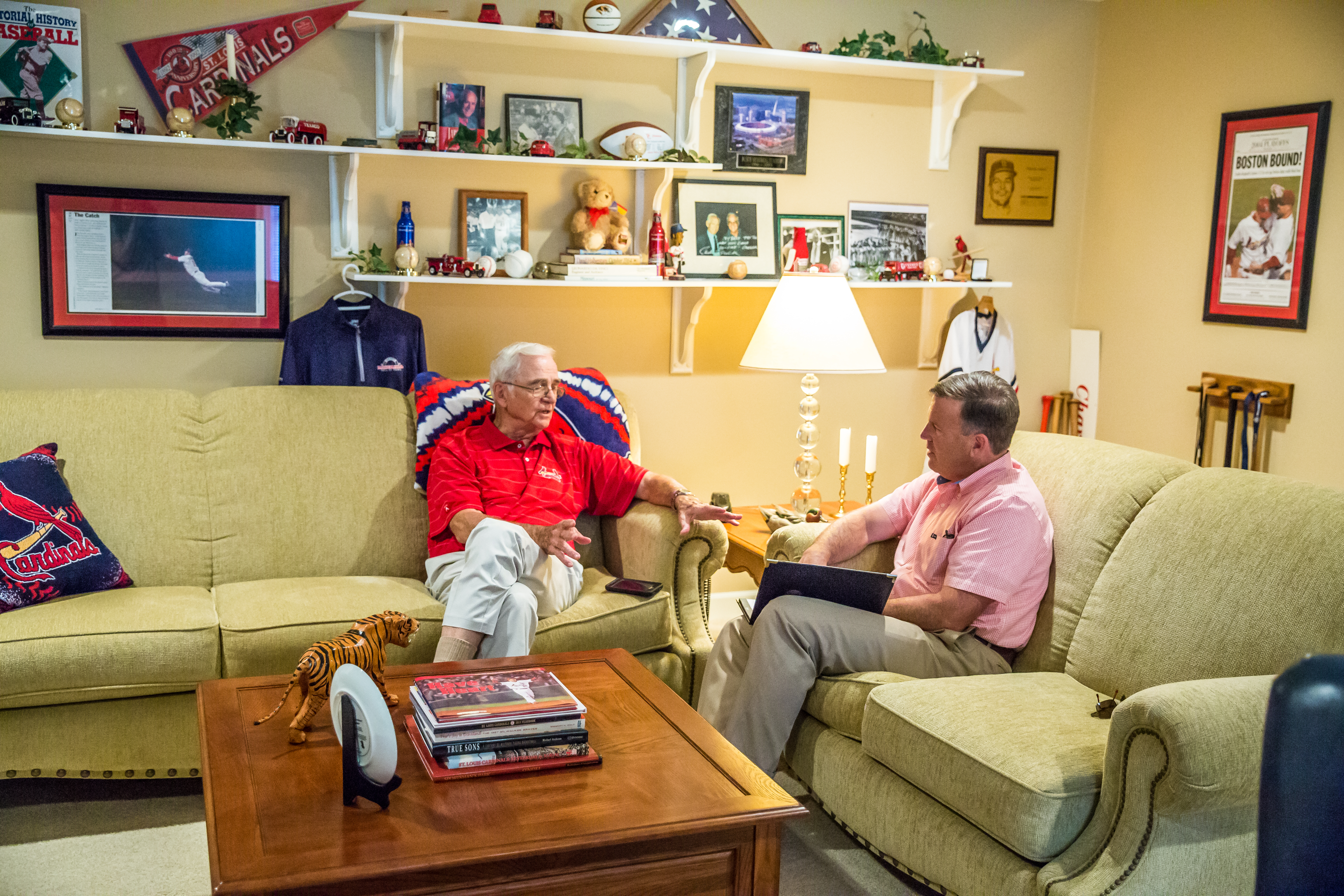
A visit to Charlie and Jo’s Fulton home is a fascinating walk down a baseball memory lane. In a comfortable family room adorned with mementos of his career, one can find Charlie’s 1964 St. Louis Cardinals World Championship ring; his number 23 jersey that he wore for the Redbirds; an old wooden bat that Charlie used with those ’64 Cardinals, complete with marks on the barrel where he came in contact with the rawhide; photos at the long-demolished Sportsman’s Park with legendary Cardinal names like Dizzy Dean and Harry Caray; a signed Cincinnati Reds jersey signed by former teammate Pete Rose, and much more.
So did a kid growing up in suburban St. Louis ever think he would realize the wildest baseball dreams anyone could dare to imagine?
“It was my dream,” he said, smiling at the memory of a boyhood in Webster Groves. “My dad took me to several Cardinals games at Sportsman’s Park when I was growing up, and I use to tell him that I wanted to be down there on the field with the players, and play in the big leagues. He told me ‘you can do it, as long as you work hard and play the game a lot.’ But he also told me to remember one thing, that I had to promise him that I would get my college degree, because baseball careers for even big leaguers do not last forever.”
So before the talented athlete could chase his dream of baseball stardom, college would come first, where Charlie’s athletic prowess turned heads in another sport. Accepting a football scholarship to the University of Missouri, James was skilled enough to set a Mizzou football record (that stood for 36 years) for pass receptions by a Tiger backfield player, catching 30 for 362 yards during his sophomore season of 1956. His play for the Mizzou baseball team in the spring, in the meantime, caught the attention of scouts for the Cardinals. As it turned out, the professional baseball dream would come quicker than expected.
“During my junior year at Mizzou, I was seriously injured while returning a punt. It was a painful thigh injury that had me in the hospital for over a week,” he said. “I worked my way back to the field, but I started thinking that, if I really wanted to play professional baseball, I better go do it before I really get hurt playing football. Even though I liked football, playing pro baseball was my dream which is why I went ahead and signed with the Cardinals.”
Signing with St. Louis and leaving Mizzou in January 1958, James was off to baseball’s minor leagues, which included stops at such outposts as Houston (before it was a big league city); Rochester, New York and Charleston, West Virginia. While many a big league dream has died for so many professional baseball players who are never able to make it out of the catacomb-like minor leagues, it took Charlie only two and half years to get the call to the show. On August 2, 1960, he was called up to the big club, his childhood team, the St. Louis Cardinals.
Suddenly, the boy from the St. Louis suburbs was sharing a locker room with Cardinal legends (and future Hall of Famers) Stan Musial, Bob Gibson and Red Schoendienst, who were now his teammates.
“Was I in awe? Sure!” said James. “It always takes awhile to get to know someone, and for them to get to know you, but most of those guys were easy to get along with. If you had questions, you could just go right up to them and ask. You know, you could always ask a guy like Stan Musial ‘what kind of pitcher is this guy we are facing tonight?’, or ‘what does that pitcher like to throw?’ Everybody would be real helpful.”
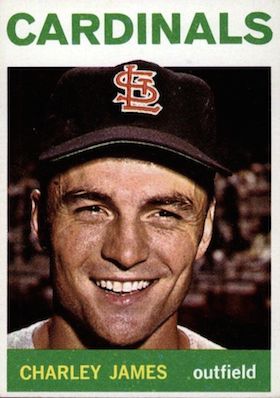 Charlie settled in with the Cardinals, and ended up playing for the hometown team for five seasons, from 1960 until 1964. His best season was 1963, when he blasted 10 home runs and hit a solid .268. But perhaps his most significant legacy with the Cardinals was his uncanny ability to hit one the greatest pitchers in baseball history, the legendary Sandy Koufax of the Los Angeles Dodgers. Charlie clouted three career home runs off the Hall of Fame southpaw, including a memorable grand slam that he hammered completely out of Sportsman’s Park during a 1962 game.
Charlie settled in with the Cardinals, and ended up playing for the hometown team for five seasons, from 1960 until 1964. His best season was 1963, when he blasted 10 home runs and hit a solid .268. But perhaps his most significant legacy with the Cardinals was his uncanny ability to hit one the greatest pitchers in baseball history, the legendary Sandy Koufax of the Los Angeles Dodgers. Charlie clouted three career home runs off the Hall of Fame southpaw, including a memorable grand slam that he hammered completely out of Sportsman’s Park during a 1962 game.
“That was big thrill,” he said with characteristic humbleness. “You couldn’t hit Koufax’s 100 mile-per-hour fastball, which had a tendency to rise at it approached the plate. But if his pitch started out at your knees, it would rise to the belt-high level by the time it got to you. So if you swung at one of those pitches, that was really the only way you could hit it, and I was fortunate to do it.”
Besides his success against the great Dodger lefty, the other top thrill from Charlie’s major league career came in 1964, when he was a member of the World Champion Cardinals. 54 years later, he proudly still sported his world championship ring as he recalled being part of the team that defeated the storied New York Yankees in the 1964 World Series. Which meant once again competing against some of baseball’s all-time, Hall of Fame greats.
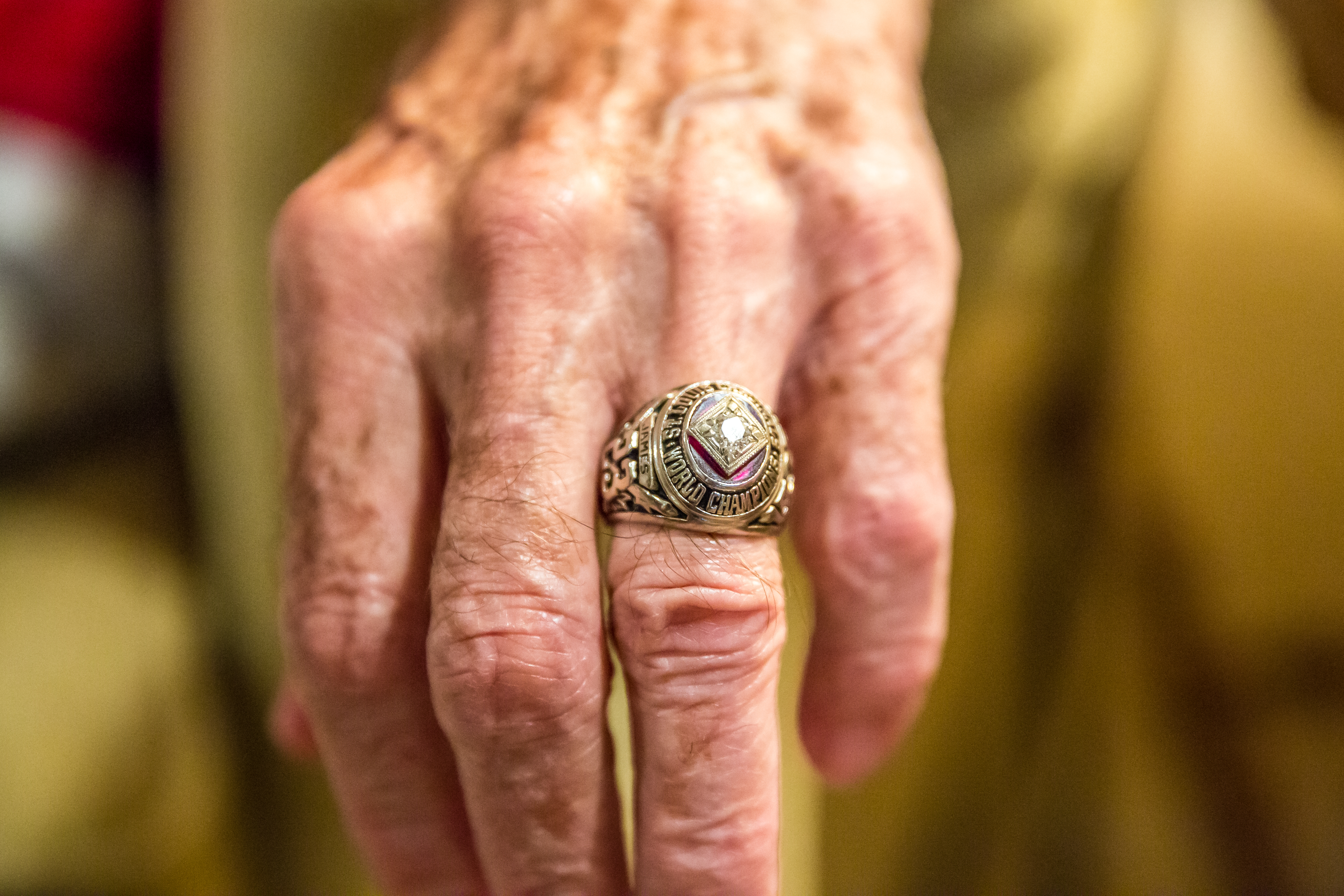
“It was really exciting, even just taking batting practice at Yankee Stadium and mixing with all those guys like (Mickey) Mantle, (Roger) Maris, and the others,” he said. “I only got a few at-bats in that series, but hitting against (Hall of Famer) Whitey Ford, and playing at Yankee Stadium, was thrilling.”
Being a part of the 1964 World Champion St. Louis Cardinals turned out to be Charlie’s last hurrah with his hometown team, as he was traded to the Cincinnati Reds after the season ended. He played his last major league season with the Reds in 1965, where among his teammates were still two more baseball legends, Pete Rose and Frank Robinson. When the Reds asked him to begin the 1966 season back in the minor leagues, Charlie – whose family by then included two small children with Jo – decided it was time to retire.
His post-baseball life included earning two degrees in Electrical Engineering from Washington University back in St. Louis, and eventually becoming president of Central Electric Company, a career move that brought his family to the city that has been his home for nearly five decades – Fulton, Missouri. And led to his selection as a member of the William Woods Board of Trustees, which he accepted in 1990.
“At that point, I had been in Fulton for about 18 years, and had become very active in the community,” he said. “William Woods University has always been such a major contributor to our community here in Fulton, and when President Barnett and her predecessor President (John) Bartholomy asked me to serve on the board, I was honored to accept. It has been a great honor to be a part of the board, and William Woods is an outstanding institution.”
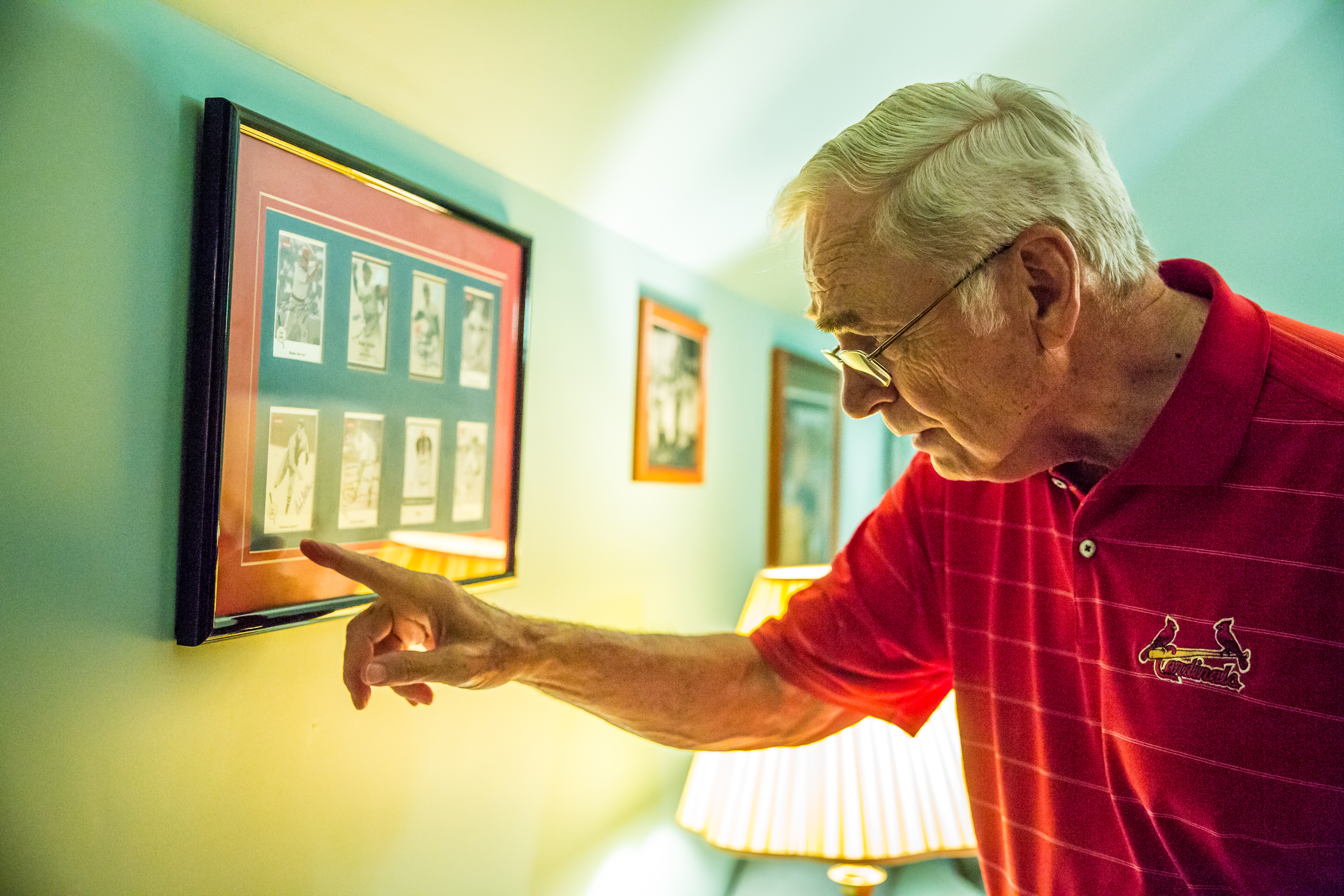
William Woods has been fortunate to have a trustee as prominent and dedicated as Charlie James, who has become an institution in his own right on the WWU Board of Trustees now for nearly three decades. He is one of the longest-serving members of the board, and has helped guide the university to significant growth and success during his tenure. His service to William Woods comes after decades of leadership at a prominent company he helped build, as well as in the community where he raised a family.
And every spring and summer, when the weather gets warm and thoughts turn to our National Pastime, the memories come flooding back. Back to once upon a time when Charlie James got to live a dream so very few of us ever get to do – to play alongside and excel against – some of the greatest men to ever put on a baseball uniform.

